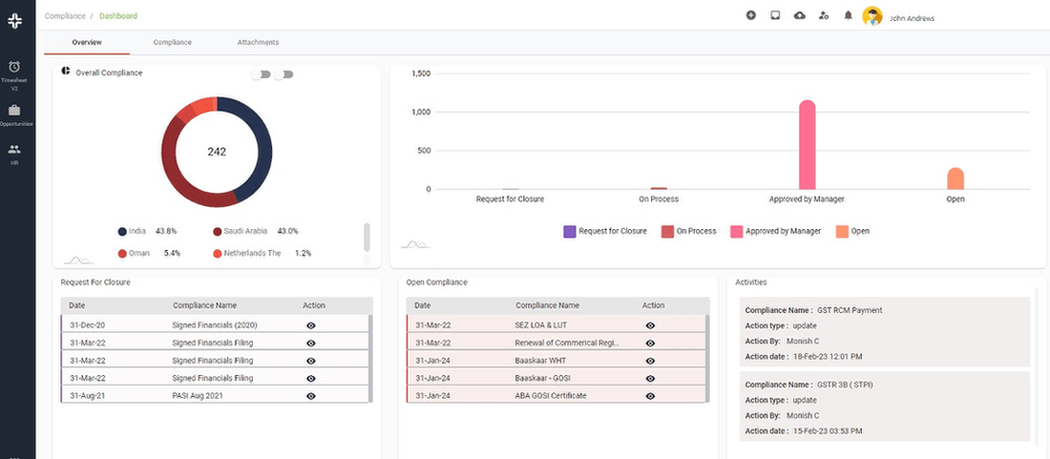Home » PSApedia
Billable Rate
Billable Rate is a crucial metric in business, determining the hourly cost for services rendered.

What is a Billable Rate?
The billable rate is a critical financial metric for any professional services firm or consultant. It’s the rate at which a company or individual charges clients for the hours worked. This rate typically includes both the actual cost of the labor and an additional margin for overheads and profit. The billable rate is a key component of a firm’s revenue strategy, directly impacting its profitability and sustainability.
Billable rates are commonly used in industries such as consulting, law, accounting, freelancing, and various service-based businesses. When a client or customer hires a professional or a company for a specific project or service, they are billed for the time spent working on that project at the agreed-upon hourly rate.
Why is Billable Rate so Important?
Understanding and optimizing the billable rate is essential for several reasons. Firstly, it’s a significant determinant of a firm’s revenue. If your billable rate is too low, you may not cover your costs or generate a sufficient profit. If it’s too high, you may lose clients to more competitively priced competitors.
Secondly, the billable rate can impact client relationships. Clients want to feel they’re getting good value, and if your rate is significantly higher than the industry standard without a clear justification, it could strain the relationship.
Finally, billable rates can influence employee satisfaction. If employees feel they’re being undervalued (i.e., their work is being billed at a high rate, but they’re not seeing the benefits), it can lead to dissatisfaction and high turnover.

Benefits of Billable rate
How to Calculate Billable Rate
Billable Rate Formula: Billable Rate = Total Revenue / Billable Hours
Example for Billable Rate: Let’s say a software developer earned a total of $10,000 for a project and worked 100 billable hours on that project.
Billable Rate = $10,000 (Total Revenue) / 100 hours (Billable Hours) Billable Rate = $100 per hour
So, the billable rate for the software developer on this project is $100 per hour.
Understanding the Difference Between Billable Rate and Cost Rate
While the billable rate is what you charge clients for your work, the cost rate is what it costs the company for an employee to perform the work. The cost rate includes the employee’s salary and any overhead costs like benefits, office space, and equipment.
The difference between these two rates is the gross profit margin. Understanding this difference is crucial for pricing strategies and evaluating the profitability of different projects or clients.
| Aspect | Billable Rate | Cost Rate |
| Definition | The amount charged to clients for services or products provided. | The internal cost incurred by a business to deliver a service or produce a product. |
| Purpose | Determines the revenue generated by providing goods or services to clients. | Helps calculate the internal expenses associated with delivering goods or services. |
| Calculation | Typically higher than the cost rate and includes profit margin. | Represents the direct cost of resources, labor, and materials used to provide the service or produce the product. |
| External Use | Used for invoicing clients and generating income for the business. | Not used for invoicing clients but helps in managing and optimizing internal costs. |
| Revenue Impact | Directly impacts the company’s revenue and profitability. | Indirectly affects profitability by managing cost control. |
How is Billable Rate Used?
Billable rate is used in several ways. For project pricing, it helps determine the cost of a project based on estimated hours. It’s also used in profitability analysis, helping firms understand which projects or clients are most profitable. Moreover, tracking billable rates over time can provide insights into market trends and help firms stay competitive.
The concept of billable rates is indeed significant in various service-based industries and businesses. It plays a pivotal role in determining how professionals and companies charge for their expertise and services, manage their finances, and maintain profitability. Accurate billing and pricing are crucial for both service providers and their clients, as they ensure transparency, fairness, and effective financial management.
Billable Rate vs Revenue vs Profit
While these terms are interconnected, they represent different financial aspects. The billable rate is the amount charged to clients for services rendered. Revenue is the total income generated by the firm from all sources, including the billable work. Profit, on the other hand, is the income left after all expenses (including cost rate) have been deducted from the revenue.
To maximize profit, firms must optimize both their billable rate (to maximize revenue) and their cost rate (to minimize expenses).
Optimizing Your Billable Rate with KEBS
KEBS, a leading Professional Services Automation Software, offers robust solutions for managing and optimizing your billable rates. By providing real-time insights into costs, utilization, and profitability, KEBS helps you make informed decisions about your billing strategy.

Billable Rate
Whether you’re looking to better understand your cost structure, analyze the profitability of different projects or clients, or benchmark your rates against the industry, KEBS can provide the insights you need.
Gain control over your finances and enhance budget efficiency while maximizing revenue with the help of KEBS. Explore a KEBS Demo today. f you have any questions, need assistance, or want to get in touch with KEBS, don’t hesitate to contact us.



